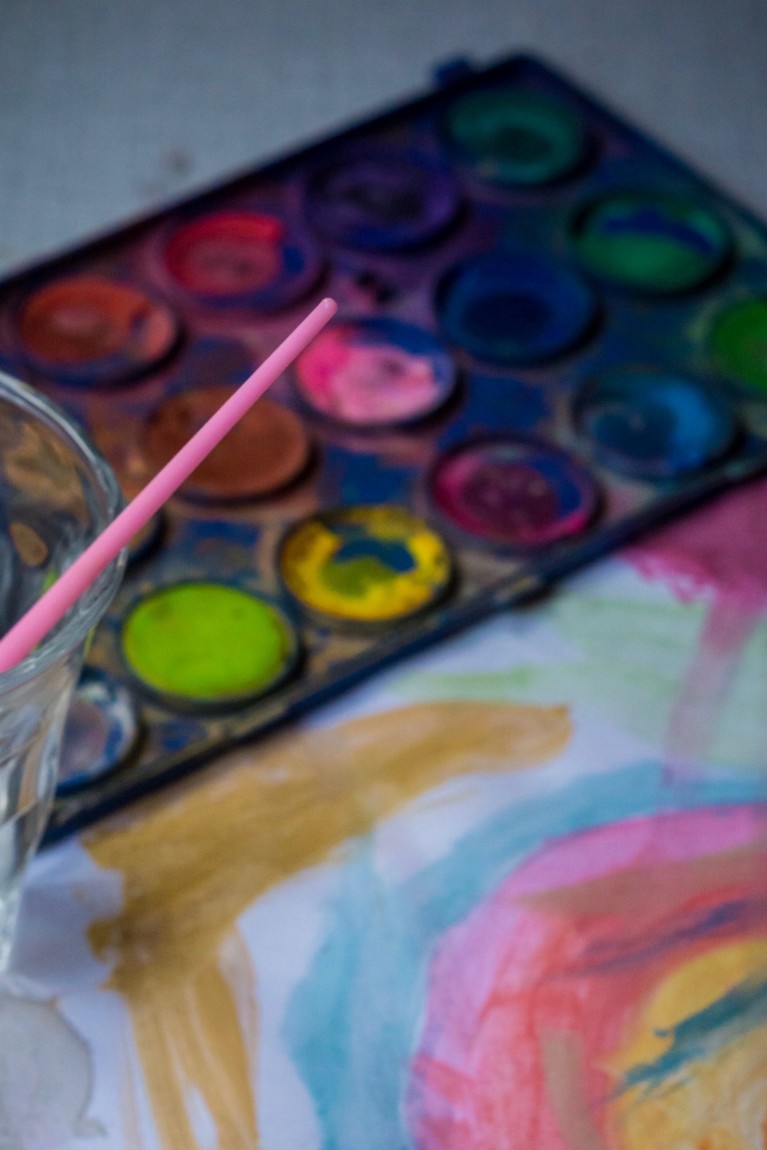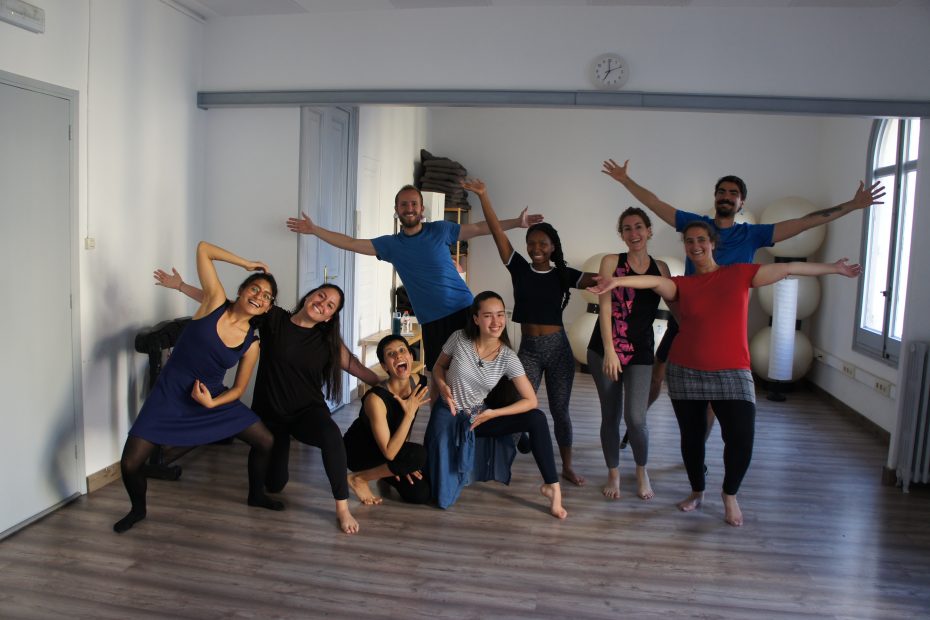The most widespread definition for Dance and Movement Therapy (DMT) is:
The the psychotherapeutic use of movement to promote emotional, social, cognitive, and physical integration of the individual, to improve health and well-being.
Despite this explanation, I have found that many people have a hard time developing an idea of What DMT actually looks like.
This is completely normal. Although rapidly growing, DMT is still an emerging profession that not many people have had access or exposure to.
This article will demistify some key misconceptions about Dance and Movement Therapy. After reading this, you should have a better idea of what a Dance and Movement Therapy session may look like, who can benefit from DMT, and the different techniques used in DMT sessions.
Hopefully this will make you fall in love with Dance and Movement Therapy as much as I did!
MYTH # 1:Therapeutic Dance And Dance And Movement Therapy Are The Same Things.
Therapeutic Dance and Dance and Movement Therapy are both valuable ways of harnessing the power of dance and movement for well-being.
However, considerable differences exist among the two. Feeling better from Dance is not the same as using Dance and Movement intentionally as psychological therapy.
The main difference between the two is that a Therapeutic Dance facilitator relies on the intuitive notion of well-being one might associate with dancing.
During a therapeutic dance class, participants may be presented choreographies, series of movements, or improvisation activities that stimulate and evoke certain emotions or feelings. Although intense feelings might emerge in these sessions, there is not usually a space to assess, link, and process the movement experience and explore the known and unknown emotions that might have resulted from them.
Stimulating music, group dynamics, and different dance styles might be used during the session, leaving the participants feeling overall better, but with no direct sense of the emotional, social, and psychological implications of the session.

On the other hand, registered Dance and Movement Therapists go through an extensive master’s degree training that includes psychology/psychotherapy training, observation and analysis of movement, movement-based intervention techniques, and clinical supervision.
The result is the ability to accompany various types of patients into a psychotherapeutic journey, where movement and dance are the primary mediums. Through different techniques, Dance/Movement Therapists are trained to assess and help bring to light how the patient’s movement responses are connected to the emotional, social, and behavioral aspects of themselves.
Once these are highlighted, the therapist accompanies the patient into processing these aspects of themselves and use them as a source of growth for daily life. Also, Registered Dance and Movement therapists operate under the typical norms surrounding psychotherapy like: confidentiality, consistancy of Therapy setting, etc.
MYTH #2: DMT Is Only For Dancers Or People Who Know How To Dance.
Dance/Movement Therapy is one of the most inclusive therapies out there!
When people hear the word dance, they usually automatically assume it is related to a dance style, technique, or performance (and more often than not, it is!).
However, this is one of DMT’s biggest misconceptions. The objective of DMT is not at all related to any of these aspects. There is no required level, necessary dance experience, or physical/cognitive ability required in learning dance material. DMT strives to be inclusive of all types of populations.
DMT is for virtually anyone. This may include elderly people, kids, people living with mental health issues, people with limited physical abilities & much more!

The core of DMT interventions is based on notions of empathy and acceptance, where therapists start by matching patients’ movement qualities, allowing them to feel seen, heard, and accepted on an embodied level.
Although Dance is an aspect of DMT, it usually comes in the form of improvised movement, making it unnecessary to follow specific steps, learn a specific style, or memorize or perform a choreography.
DMT is not only limited to dance in its proper sense. Elements of play, expressive movement, theatre, and psychomotricity can all be explored in DMT sessions.
The efficiency of DMT is based on the therapist’s capacity to adapt to the individual needs of the patients they are working with and find creative ways to answer them. Things like transitional objects, props, and sensorial material are examples of how therapists adapt sessions to different populations’ needs.
Being a movement-based therapy, DMT is particularly inclusive to people for whom cognitive or verbal processing of emotions does not come to easily.
MYTH #3: DMT Is Not Research-Based.
Historically, creative therapies such as DMT, music therapy, play therapy, art therapy, and drama therapy have had to struggle to become recognized professional disciplines.
Although DMT is still an emerging practice, the validity of the discipline is now more widespread.
Research is an integral part of the development of Dance/Movement Therapy as a recognized discipline. Studies in the field use a variety of methodologies, including qualitative, quantitative, mixed-method, and arts-based approaches.
Different countries have different ways of researching and regulating the profession. The American Dance Therapy Association (ADTA) was first to create a professional association, helping put DMT on the map.
Other countries and regions have developed their own versions of this association, creating graduate-level training programs based on ADTA standards.
Canada’s Grand Ballets Canadiens has recently created the National Center for Dance Therapy, where clinical research is at the core of its mission. Yay Canada! (it’s my home country ☺️)
In the UK, Registered Dance and Movement Therapists are part of the order of psychotherapists, giving them the same benefits as any registered psychologist.
One thing is clear, research in this field is growing more than ever. More people are looking beyond classical verbal psychotherapy and are searching for more creative and holistic alternatives to therapy.
MYTH #4: A Dance/Movement Therapy Session Only Involves Movement.
Although movement in all its shapes and forms is the main element of a DMT session, many other elements can also be found in them.
TALKING:
Many therapists reserve a time for verbal expression before and after the movement part of the session where patients can talk about how they feel, themes they want to explore during the movement part, elements of the movement part they want to process, etc.
DRAWING:
Drawing and painting are essential tools used to symbolize and bring to light conscious and unconscious elements of the session. This is particularly useful when working with children or people who have limited verbal expression.

MUSIC/INSTRUMENTS:
If words are the tools of the mind, movement is the tool of the body, and music is its soundtrack. Although not all therapists use music during sessions, the use of music and instruments are a significant part of DMT.
In some cases, instruments are used as transitional objects to favour movement of the body (after all, you can’t play an instrument without moving at least part of your body!).
Also, the purposeful use of music is used by therapists to evoke specific movement patterns (a strong rhythm makes you move differently than a soft melody). It can also be used to support or encourage patients to go deeper into their movement explorations.
GUIDED MEDITATIONS/ VISUALIZATIONS:
These can be used by therapists to help patients connect to their bodies before starting the movement part of the session or at the end to integrate some elements of it. It can be an effective way to transition into the different parts of the sessions.
JOURNALING:
In many cases, therapists ask patients to bring a personal journal to the sessions, encouraging them to keep track of their individual processes and elaborate on some aspects of them.

Because of its creative nature, the scope of how Dance/Movement Therapy is carried out is quite large. To me, that is the beauty of the discipline. Using the same basic principles and methodologies, each therapist can use its own areas of speacialty, areas of interest, and skills to make their sessions rich, innovative, and imaginative.
In the end, it is about finding what approach resonates with you the most. All you have to do is try!
